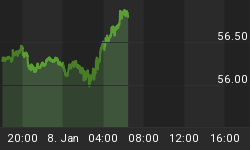As the NASDAQ bubble inflated, some urged the Fed to raise margin requirements as a laser-guided weapon to take some air out of the stock market. The Fed rejected these urgings. The new bubble in the U.S. economy is the housing market. Oh, it is not a nationwide bubble. No, it is concentrated only in areas where population and GDP growth are concentrated. That is, there is no housing bubble in Manhattan, Kansas, but there is one in Manhattan, New York. Has the Fed reconsidered the use of its regulatory suasion in deflating asset price bubbles? It looks as though it may be flirting with the idea. On May 16, the Fed, along with other depository institution federal regulatory agencies, issued some "guidance" to commercial banks, thrifts and credit unions with regard to "sound risk management practices" when it comes to home equity lending. Evidently, the Fed and its fellow regulators have noticed that some risky elements have crept into home equity lending. These risky elements identified by the regulators are:
- Interest-only features that require no amortization of principal for a protracted period;
- Limited or no documentation of a borrower's assets, employment and income;
- Higher loan-to-value (LTV) and debt-to-income ratios;
- Lower credit risk scores for underwriting home equity loans;
- Greater use of automated valuation models and other collateral evaluation tools for the development of appraisals and evaluations; and
- An increased number of transactions generated through a loan broker or other third party.
The regulators "have found that in some cases credit risk management practices for home equity lending have not kept pace with the product's rapid growth and eased underwriting standards." The implication of all this is that bank examiners will be looking more closely at financial institutions' home equity lending. And the implication of this increased regulatory scrutiny is that financial institutions are likely to tighten their non-interest terms on home equity lending, which, presumably will slow down the growth in these types of loans.
Have home equity loans become a big deal at commercial banks? You bet they have. As shown in Chart 1, home equity loans on the books of U.S. commercial banks totaled $419 billion at the end of April. As suggested by the semi-log scale on the vertical axis of Chart 1, the growth rate of these loans has accelerated since the end of 1999. In fact (until the Fed revises the data), the compound annual rate of growth of home equity loans on the books of commercial banks from December 1999 through April 2005 was 30.5%. Home equity loans are the fastest growing major category of commercial bank earning assets. As shown in Chart 2, home equity loans now account for 6.6% to bank earning assets - up from 2.4% at the end of 1999.
Chart 1
Chart 2
How would the curbing of home equity loans via regulatory suasion help deflate the housing bubble? After all, are not home equity loans just a tax-efficient way of extracting equity from a home to purchase a Harley? It is that and more today. Some banks are pushing home buyers to forgo private mortgage insurance if they are short a 20% downpayment. Instead, why not borrow all or part of your downpayment with a home equity loan. These are called "piggyback" loans. Piggyback loans are more tax efficient than private mortgage insurance because the 20% downpayment deficient home buyer gets to deduct from his taxable income the interest on the piggyback loan. As Chart 3 shows, the popularity of piggyback loans has increased significantly of late. Back in 2001, only 20% of mortgage originations for the purchase of home had a piggyback feature associated with it. Last year, that percentage more than doubled to 42. The regulators might be a bit concerned that the some of the banks pushing these piggyback loans are not quite as good at assessing default risk as the private mortgage insurers are.
Chart 3
This regulatory suasion with regard to home equity loans is likely to have only a small deflating effect on the housing bubble, but the regulators probably only want a small deflating effect right now. Chart 4 shows that U.S. commercial banks' mortgage-related assets are now over 60% of their total earning assets - a postwar record high. If the U.S. housing bubble were to go "whoosh," great damage would be done to the U.S. banking system. Ask the Japanese how an economy performs for a decade when its banking system is crippled.
Chart 4
















